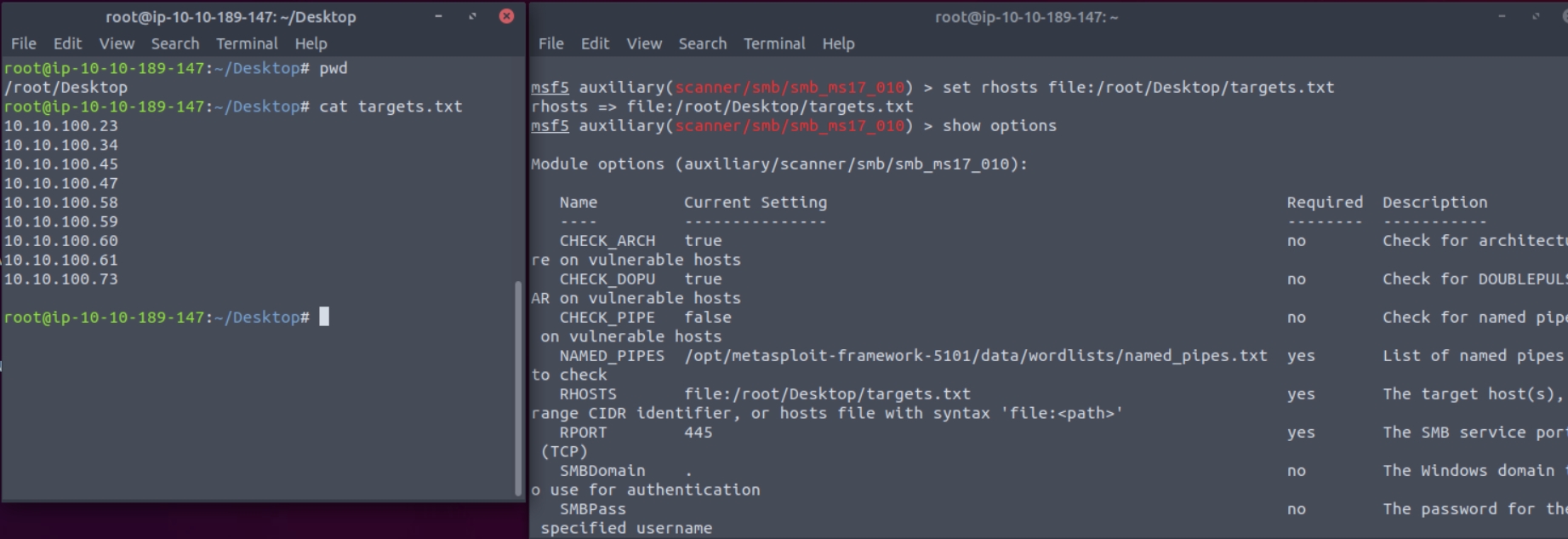metasploit
rankings given in search:

You can direct the search function using keywords such as type and platform:
msf6 > search type:auxiliary telnet
Matching Modules
================
# Name Disclosure Date Rank Check Description
- ---- --------------- ---- ----- -----------
0 auxiliary/admin/http/dlink_dir_300_600_exec_noauth 2013-02-04 normal No D-Link DIR-600 / DIR-300 Unauthenticated Remote Command Execution
1 auxiliary/admin/http/netgear_r6700_pass_reset 2020-06-15 normal Yes Netgear R6700v3 Unauthenticated LAN Admin Password Reset
2 auxiliary/dos/cisco/ios_telnet_rocem 2017-03-17 normal No Cisco IOS Telnet Denial of Service
3 auxiliary/dos/windows/ftp/iis75_ftpd_iac_bof 2010-12-21 normal No Microsoft IIS FTP Server Encoded Response Overflow Trigger
4 auxiliary/scanner/ssh/juniper_backdoor 2015-12-20 normal No Juniper SSH Backdoor Scanner
5 auxiliary/scanner/telnet/brocade_enable_login normal No Brocade Enable Login Check Scanner
6 auxiliary/scanner/telnet/lantronix_telnet_password normal No Lantronix Telnet Password Recovery
7 auxiliary/scanner/telnet/lantronix_telnet_version normal No Lantronix Telnet Service Banner Detection
8 auxiliary/scanner/telnet/satel_cmd_exec 2017-04-07 normal No Satel Iberia SenNet Data Logger and Electricity Meters Command Injection Vulnerability
9 auxiliary/scanner/telnet/telnet_encrypt_overflow normal No Telnet Service Encryption Key ID Overflow Detection
10 auxiliary/scanner/telnet/telnet_login normal No Telnet Login Check Scanner
11 auxiliary/scanner/telnet/telnet_ruggedcom normal No RuggedCom Telnet Password Generator
12 auxiliary/scanner/telnet/telnet_version normal No Telnet Service Banner Detection
13 auxiliary/server/capture/telnet normal No Authentication Capture: Telnet
Interact with a module by name or index, for example use 13 or use auxiliary/server/capture/telnet
msf6 >Parameters you will often use are:
RHOSTS: “Remote host”, the IP address of the target system. A single IP address or a network range can be set. This will support the CIDR (Classless Inter-Domain Routing) notation (/24, /16, etc.) or a network range (10.10.10.x – 10.10.10.y). You can also use a file where targets are listed, one target per line using file:/path/of/the/target_file.txt, as you can see below.

RPORT: “Remote port”, the port on the target system the vulnerable application is running on.PAYLOAD: The payload you will use with the exploit.LHOST: “Localhost”, the attacking machine (your AttackBox or Kali Linux) IP address.LPORT: “Local port”, the port you will use for the reverse shell to connect back to. This is a port on your attacking machine, and you can set it to any port not used by any other application.SESSION: Each connection established to the target system using Metasploit will have a session ID. You will use this with post-exploitation modules that will connect to the target system using an existing connection.
some usefull exploits:
enumeration:
explotation:
if you have username and password of a smb user:
handler:
post exploitation:
Last updated